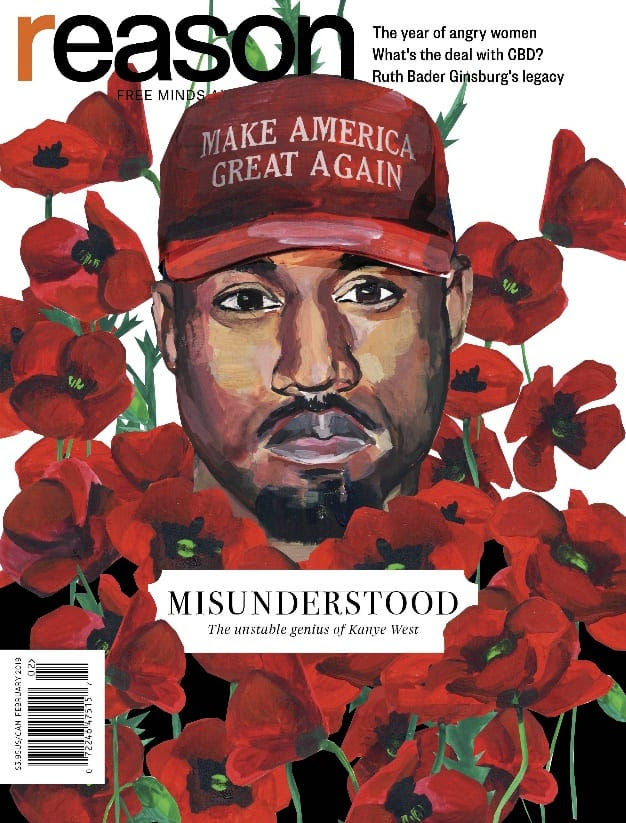What Makes a Good Magazine Cover?
Experts Pick 12 From Year About to End
Post Calls Khashoggi Arrests a Travesty
The Stories Left in Their Notebooks
On ‘Reverse Underground Railroad,’ Black Kids Were Stolen Off the Street
N.Y. Times Rebuts Critics of 1619 Project
$20K Donation for Latino J-Scholarships
Even a Columnist Can’t Do It All
The Story of 2020: Race and Gender
Short Takes
Support Journal-ismsExperts Pick 12 From Year About to End
“While 2019 winds down, many of us are reflecting on the year that was,” Caysey Welton wrote Thursday for Folio:, which in its print incarnation was known as the magazine about magazines. “We talk about our favorite movies, TV shows, records, etc. But here at Folio:, one of our favorite things to look back at are the year’s best magazine covers.
“As an annual tradition, we reach out to some of the top designers from around the industry to get feedback on their favorite covers. Like every year, the picks show a diversity of timely, relevant topics as well as design aesthetics. . . .” Twelve covers are featured.
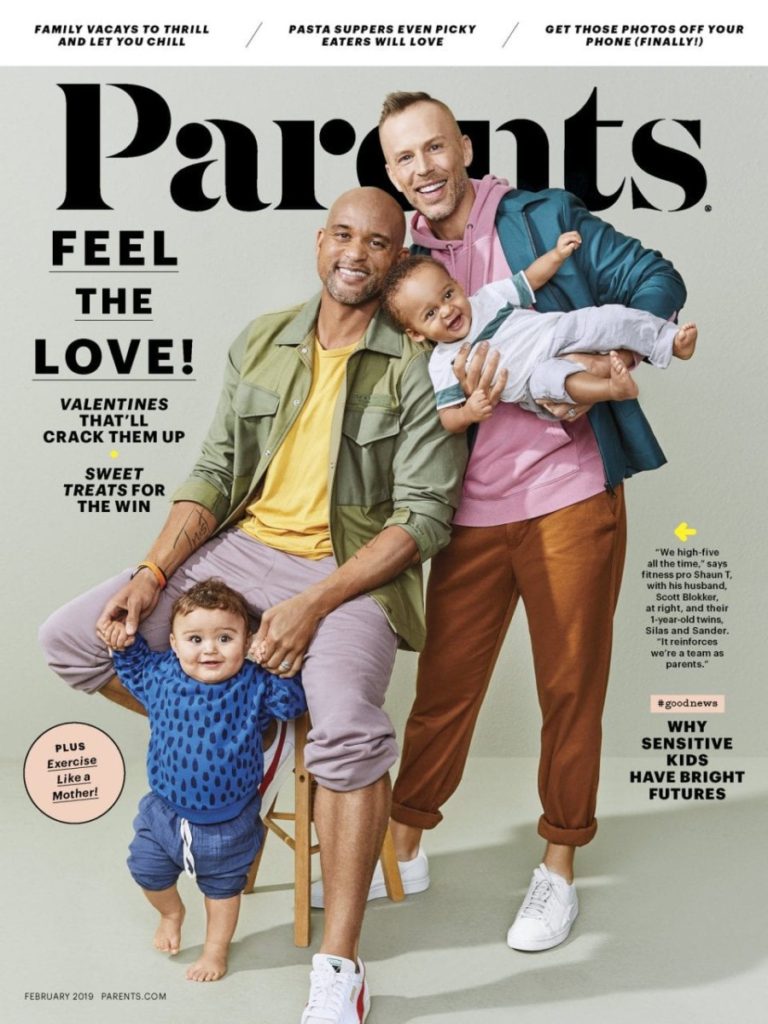
Jami Geittmann, senior art director, Taste of Home, wrote, “I’ve picked the February 2019 Parents cover featuring fitness pro Shaun T and his husband, Scott Blokker. By featuring Shaun, his husband and their adorable twins, Silas and Sander, Parents not only normalizes same-sex couples, it reflects America’s diverse culture and the different configurations of families today. . . .”
Andrea Vagas, creative director, PCT and Hemp Grower, wrote, “I think this image of successful hip-hop artist and public provocateur Kanye West donning a ‘Make America Great Again Hat’ is iconic. It’s my favorite because it wasn’t an easy choice and it evokes a strong emotional response — exactly what art is supposed to do. . . .”
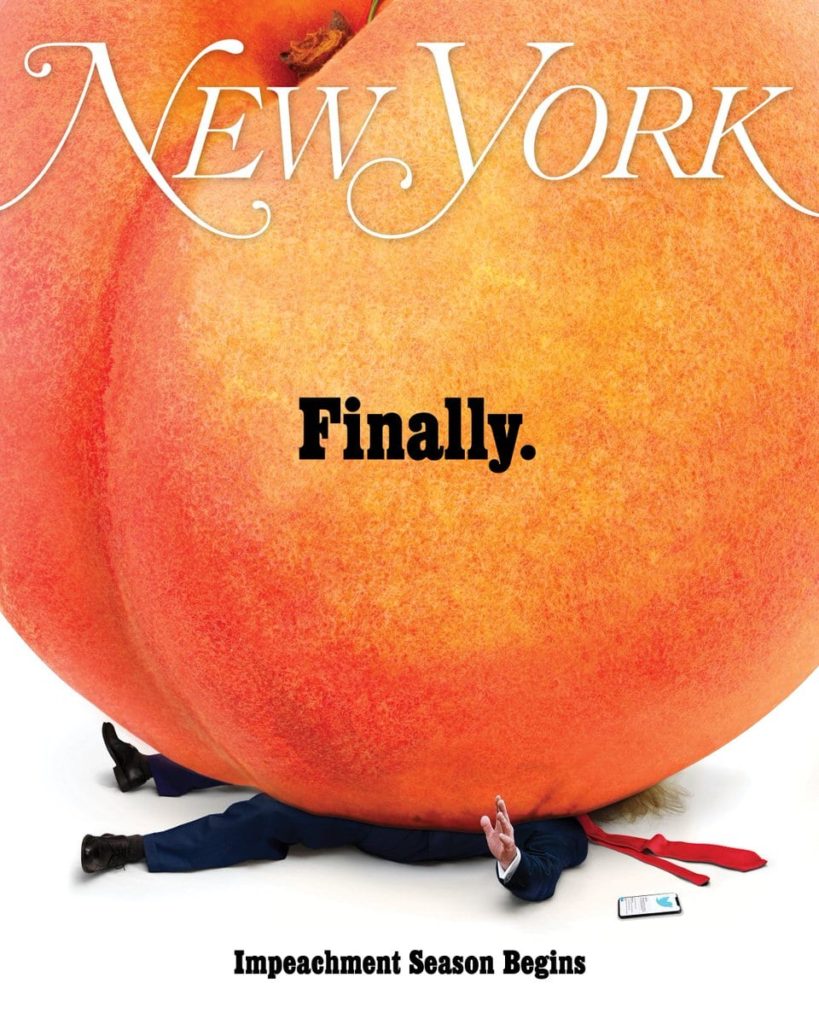
Post Calls Khashoggi Arrests a Travesty
“Saudi Arabia has delivered a shameful travesty of justice in the murder of journalist Jamal Khashoggi,” the Washington Post, where Khashoggi’s column was based, editorialized Monday.
“Following a closed trial, authorities announced Monday that five people implicated in the Oct. 2, 2018, killing had been sentenced to death, and three more were given prison sentences. None were named. But two men who are known to have directed the operation, former deputy chief of intelligence Ahmed al-Assiri and Saud al-Qahtani, a top aide to Crown Prince Mohammed bin Salman, were exonerated. Most likely they were excused at the direction of the crown prince, who, according to the CIA, is the real author of the crime.
“The result is an insult to Khashoggi’s family and to all those, including a bipartisan congressional majority, who have demanded genuine accountability in the case. International acceptance of the result would not only be morally wrong but dangerous, too: It would send the reckless Saudi ruler the message that his murderous adventurism will be tolerated. . . .”
The Stories Left in Their Notebooks
“Amid a crisis in local news, eight journalists who left newsrooms in 2019 reflect on the stories left in their notebooks. Photographers who also lost their jobs captured them on their former beats,” Sarah Mervosh, Amy Harmon and Nicholas Bogel-Burroughs wrote Saturday for the New York Times.
Wilborn P. Nobles III (pictured) was one of the eight. “Mr. Nobles is a New Orleans native who worked as an education reporter at The Times-Picayune, which was purchased and absorbed by its competitor, The Advocate, earlier this year. He is now a reporter at The Baltimore Sun,” the authors wrote.
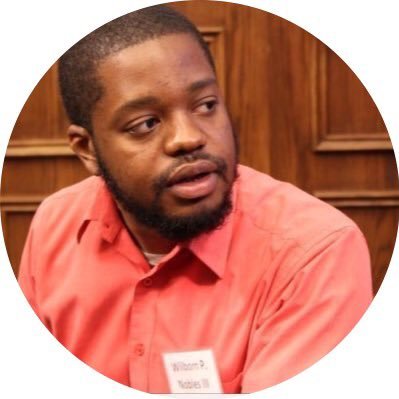 Nobles wrote, “I was covering the Orleans Parish School District. I was responsible for giving residents and the nation an idea about what it was like to participate in one of the largest contemporary school experimentations in the country, which was an all-charter school district. The charter school system in New Orleans wouldn’t be what it is today had it not been for Hurricane Katrina and the levee failures.
Nobles wrote, “I was covering the Orleans Parish School District. I was responsible for giving residents and the nation an idea about what it was like to participate in one of the largest contemporary school experimentations in the country, which was an all-charter school district. The charter school system in New Orleans wouldn’t be what it is today had it not been for Hurricane Katrina and the levee failures.
“I was 13 when Katrina occurred. My mother stayed, and she drowned in her home. My mom was a substitute teacher. She taught English and language arts. My participation covering that system as an education reporter was informed at a basic level just by the fact that my first teacher was my mom.
“There’s so much that I felt was left undone. I’ve heard a few things both before and after I was laid off about abuse in school. Some involving a school bus driver allegedly harassing a student and that same bus driver being a registered sex offender. After I got laid off, I heard another allegation about a group of students being transferred because the football players had been sexually harassing those students. These are difficult things to prove and find people willing to talk about it, but if there are allegations out there, somebody needs to dig. Every now and then, I still kind of stress myself out thinking about it. . . .”
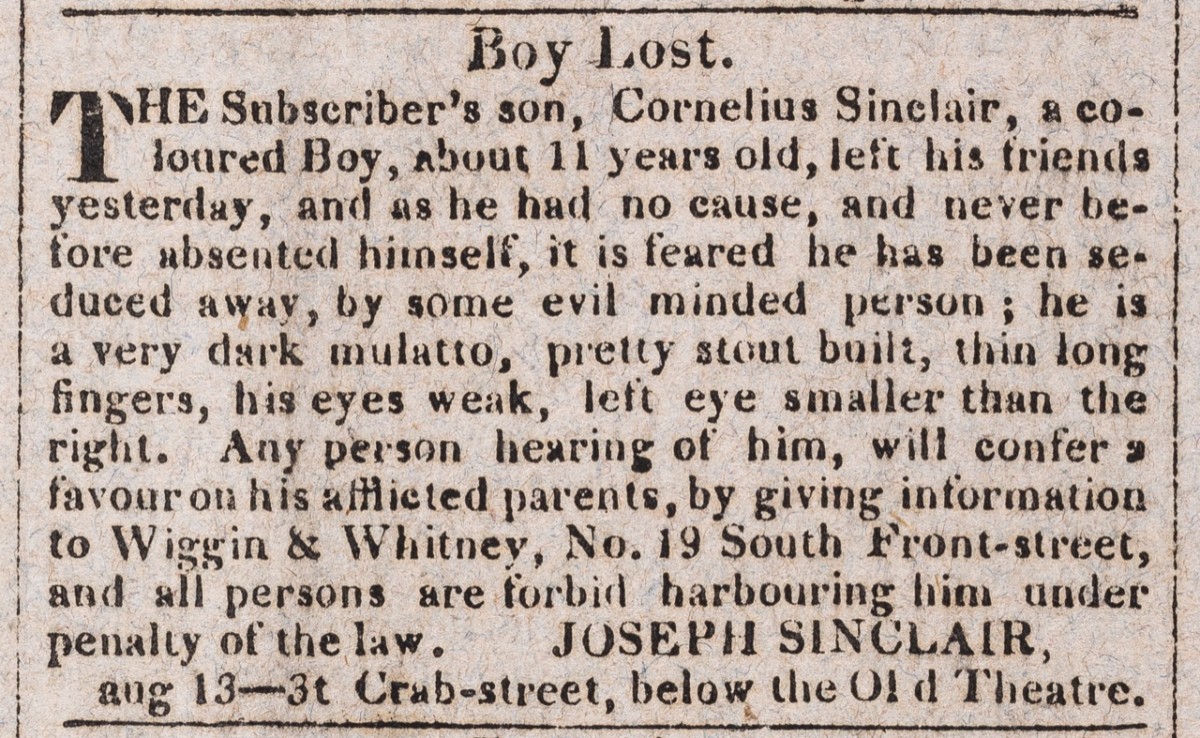
On ‘Reverse Underground Railroad,’ Black Kids Were Stolen Off the Street
Whether or not they’ve seen the movie “Harriet” about the African American abolitionist Harriet Tubman, most Americans have heard about the Underground Railroad. But in a new book bound to prompt one of those “why-didn’t-I-know-about-this?” moments, author Richard Bell describes a “Reverse Underground Railroad” with about the same number of “passengers” — roughly “tens of thousands of each over a 50- or 60-year period.”
Instead of spiriting enslaved black people from the South to the North, however, on the “Reverse Underground Railroad,” free black people in the North were kidnapped or tricked into slavery in the South.
Bell describes this phenomenon in the newly published “Stolen: Five Free Boys Kidnapped Into Slavery and Their Astonishing Odyssey Home” (37Ink/Simon and Schuster.)
Moviegoers saw a glimpse of this practice in the Academy Award-winning 2013 film “12 Years a Slave,” based on the 1853 memoir of Solomon Northup. But Bell, a historian who teaches at the University of Maryland in College Park, says that Northup, a middle-class adult when he was tricked and captured by con men, was more of an outlier.
“Most of the kidnappers active on the Reverse Underground Railroad were men, though some were women. Most were white, but a surprising number were black. They rarely approached highly literate, middle-aged men like Northup. They preferred instead to lure away poorly educated children with ruses that could swiftly separate them from their families,” Bell writes.
“Very few of their captives traveled by ship to New Orleans. Instead, kidnappers forced most boys and girls to trek southward on foot in small, specialized overland convoys known as coffles, after the Arabic word for ”caravan.’ Their prisoners rarely ended up in showrooms or on the auction block, and were vastly more likely to be sold off in ones and twos to planters in the Mississippi and Alabama Cotton Belt who could not afford New Orleans prices.”
Bell says he scoured 19th-century newspapers along the East Coast as part of his research, and found evidence of this frightening traffic in the ads placed by distressed parents, such as the one pictured above.
The historian messaged Journal-isms, “such ads were quite common, I’m afraid, and you could open almost any early 19th century newspaper in a city like Philadelphia and expect to find one.
“Newspapers were thus the organs by which distraught parents announced to the world that their beloved sons and daughters had been abducted and enslaved. They were vehicles for appeals for information, and, separately, for discussion and condemnation of the frequency with which free black children and adults were being trafficked into slavery. As such they are one of the most important sources though which historians can document the existence of what I call the Reverse Underground Railroad.”
Were there many newspapers that were vehicles for condemnation of this “Reverse Underground Railroad”? “Few . . . a few.” Bell replied. “They were the antislavery papers, like The Genius of Universal Emancipation, Freedom’s Journal, the African Observer etc. Many others were wholly indifferent…”
A reader on the site Goodreads commented, “That these five boys made it back. . .well not all did, and that’s part of the sorrow. . .that they made it back was nothing short of miraculous. Not all victories are happy. . . and they did make it back, but carried the memories down through the generations (if there be generations). . . .”
In an appearance at a Baltimore bookstore (video) rebroadcast on C-SPAN Radio over the weekend, Bell made additional parallels with 2019. He compared the conversations that early-19th-century Northern black parents had with their children with those that today’s counterparts have about interacting with police or other strangers. Only in the 19th century, the penalty was slavery.
Bell noted that slavery is not a thing of the past. “Sex slavery, agricultural slavery, domestic slavery. It’s happening in California on the big agribusinesses there that supply of our major supermarkets and restaurants. Sex slavery is happening across these United States. Domestic slavery is happening under the protections of diplomatic immunity all over Washington, D.C., tonight and every night,” he said at the bookstore.
“It’s happening in London, too. This is not just an American problem. It’s happening in all the great global capitals of this world,” Bell continued. “Two organizations that study this phenomenon. One is called Free the Slaves; the other one is called Anti-Slavery International. They estimate that in 2019 there are somewhere between 30 and 40 million people in slavery around the world, and to be clear, that is vastly more than were enslaved when Lincoln became the president in the election of 1860. . . . This is an ongoing struggle to which everyone should be committed. . . .”
N.Y. Times Rebuts Critics of 1619 Project
“New York Times Magazine Editor-in-Chief Jake Silverstein stood behind the publication’s 1619 Project, rejecting historians’ assertion that the storytelling warrants corrections,” Ja’han Jones reported Monday for HuffPost.
“The project, which chronicles the history of anti-Black policies ― written and unwritten ― in the United States since enslaved Africans were first brought to serve English colonists in 1619, has received both praise and criticism since launching in August.
“Among the critics: five professors from Brown University, Texas State University, Princeton University and City University of New York. In a letter to The New York Times, published in the newspaper on Friday, they outlined their issues with aspects of the project that they argue are inaccurate or unfair. . . .
“They argue the package inaccurately claims colonial independence from Britain was largely motivated by colonists’ interest in maintaining slavery. They also said they believe the project contains some ‘misleading’ material, specifically about former President Abraham Lincoln’s views on slavery and Black people generally. . . .
″ ‘During the fact-checking process, our researchers carefully reviewed all the articles in the issue with subject-area experts,’ Silverstein wrote. ‘This is no different from what we do on any article.’
“Silverstein also wrote that the founding documents outlining American democracy have allowed vast racial inequality to continue. . . .”
- David Barber, History News Network: Why Colleges Need a Required Class in African American History
- Eromo Egbejule, Thomson Reuters Foundation: West African journalists converge in Lagos for first-ever training on slavery and trafficking
- Michael Harriot, the Root: #NotAllHistorians: Some White People Are Upset That the New York Times’ 1619 Project Isn’t Centered in Whiteness
? COME THROUGH BABYYYYYYYYYYYY WE HAVE THE SHEA SERRANO SCHOLARSHIP IN PLACE NOW ??????? https://t.co/zbXAZVS8Rz
— Shea Serrano (@SheaSerrano) December 18, 2019
$20K Donation for Latino J-Scholarships
“Journalist and author Shea Serrano is teaming up with the San Antonio Association of Hispanic Journalists to launch a scholarship for Latinx folks interest in publishing or journalism,“ Ecleen Luzmila Caraballo reported Thursday for remezcla.com. “Serrano donated $20,000, which will be awarded as $5,000 scholarships over the next four years.
“The writer’s motivation for doing so was birthed from a disappointing, albeit unsurprising, Publishers Weekly report, which showed that in 2018, Hispanics only made up 3% of publishing houses. All in all, the study confirmed that publishing – like newsrooms for US legacy publications and on-air sources – is overwhelmingly white. . . .
” ‘The only two requirements to apply for the scholarships is that the person be Latinx and have a desire to work as a writer in either of the two aforementioned fields. The person’s pedigree, school nor their GPA will be determining factors for the scholarship. ‘I got exactly zero scholarships I applied for,’ he wrote. ‘My life has changed so so so much because of writing.’ . . .”
Even a Columnist Can’t Do It All
“At the end of my first year as a columnist for the L.A. Times, I find myself thinking about what I’ve achieved, and what I haven’t,” Frank Shyong (pictured) wrote Monday for the Times.
“I began this year with a lofty goal. I wanted to tell the stories of all of the communities and cultures that make up Los Angeles, at least all the ones that get left out. I wanted to articulate a version of the city that had all those voices in it. But I’m just one writer, who can only speak two languages, Mandarin and English, and I didn’t achieve as much as I’d hoped.
 “I tried to report stories about swap meets and quinceañeras, but found myself frustrated with my inability to speak Spanish. I tried to pitch stories about black, Jewish and Iranian people, among many others, only to find that I did not know enough about those communities to understand what a good story was.
“I tried to report stories about swap meets and quinceañeras, but found myself frustrated with my inability to speak Spanish. I tried to pitch stories about black, Jewish and Iranian people, among many others, only to find that I did not know enough about those communities to understand what a good story was.
“And confronting the responsibilities of such a large platform has reordered and changed my priorities. I’ve had to do a lot of learning on the job. I haven’t always been successful, but I hope I’ve at least been interesting.
“Here are a few takeaways I wanted to share:
“Los Angeles is a long battle between fantasy and reality. . . .
“Everything is everywhere. . . .
“There are many mainstreams, not just one. . . .”
The Story of 2020: Race and Gender
“For many of my peers in political journalism, the historic election of Barack Obama as America’s first black president was the biggest and most momentous election we had ever covered,” Errin Haines, the Associated Press’ national writer on race and ethnicity, wrote for a Nieman Lab edition on predictions for 2020.
“But the 2020 contest may prove to be the most consequential election of our time. Like 2008, next year’s presidential campaign will center largely around issues of race. Race and gender are the story that will drive the narrative from now until November.
“The upcoming presidential contest follows a decade shaped by protest and progress. National reckonings around sexual violence and systemic inequality have unleashed political activism that has taken several forms, from activism to bids for elected office.
“Women and people of color found their voice, making headlines and making change across our society, from the Women’s March to Black Lives Matter — and perhaps nowhere more prominently or impactfully than in our politics. All have set the stage for a 2020 election in a deeply divided America, with some of the clearest fault lines lying at the intersection of sex and racial identity.
“This reality must also be reflected in our nation’s newsrooms, where two-thirds of political journalists are still white men and women are too often still covered as a special interest “group. In 2020, when this country will mark the 100th anniversary of women’s suffrage, it’s worth reimagining the role of women in our democracy and how we as journalists are reporting on how their priorities are translating into political action. . . .”
- Claire Fallon, HuffPost: Was This Decade The Beginning Of The End Of The Great White Male Writer?
- David Leonhardt, New York Times: How ‘Centrist Bias’ Hurts Sanders and Warren
Short Takes
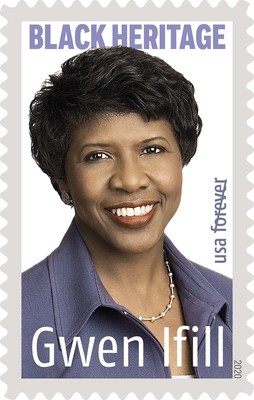 The dedication ceremony for the Gwen Ifill Black Heritage Forever Stamp, honoring one of the first African Americans to hold prominent positions in both broadcast and print journalism, takes place Jan. 30 at 11 a.m. EST, the U.S. Postal Service announced Monday. Attendees are encouraged to RSVP at usps.com/gwenifillblackheritage. Metropolitan AME Church, 1518 M Street NW, Washington, DC 20005, where Ifill worshipped, is hosting the ceremony. (Earlier story [third item] )
The dedication ceremony for the Gwen Ifill Black Heritage Forever Stamp, honoring one of the first African Americans to hold prominent positions in both broadcast and print journalism, takes place Jan. 30 at 11 a.m. EST, the U.S. Postal Service announced Monday. Attendees are encouraged to RSVP at usps.com/gwenifillblackheritage. Metropolitan AME Church, 1518 M Street NW, Washington, DC 20005, where Ifill worshipped, is hosting the ceremony. (Earlier story [third item] )- “An analysis of hundreds of thousands of police stops confirms a racial disparity exists across Ohio, Max Londberg and Lucia Walinchus reported Dec. 18 in a joint project by the nonprofit newsroom Eye on Ohio, the Cincinnati Enquirer and researchers from Stanford University’s Big Local News program. The reporters reviewed 315,281 stops from 2009 to 2017 in Cincinnati, 128,157 in Columbus from 2012 through 2016, and 47,079 in Cleveland in 2016 and 2017. “Certain police actions, such as pulling over a driver or issuing a ticket, are more likely to occur in predominantly black neighborhoods than in white ones,” they reported.
- “An analysis of more than 15,000 physical restraints in 100 Illinois school districts from August 2017 to early December 2018 found that about a quarter of the interventions began without any documented safety reason,” Jennifer Smith Richards of the Chicago Tribune and Jodi S. Cohen and Lakeidra Chavis of ProPublica Illinois jointly reported Friday. “Instead, they often happened after a student was disrespectful, profane or not following rules. These instances violate a 20-year-old state law that allows children to be restrained at school only for safety reasons. . . .”
 “Thanks to $10,000 in bail paid with the help of his friends in Florida, Cuban journalist José Ramón Ramírez Pantoja (pictured) was released on parole to continue his asylum process in the United States,” Paola Nalvarte reported Dec. 16 for the Knight Center for Journalism in the Americas. She also wrote, “According to the Cuban journalist, he had to leave the island after spending more than two years without getting a job as an independent journalist that would allow him to financially support himself, and due to threats against his life. . . . It all started in 2016, when Ramírez was fired from state broadcaster Radio Holguín, according to information from Cuban news site 14ymedio. He was dismissed because he published statements by the deputy director of the historic official newspaper Granma on his Facebook profile and in his personal blog, Verdad de Cuba. . . .”
“Thanks to $10,000 in bail paid with the help of his friends in Florida, Cuban journalist José Ramón Ramírez Pantoja (pictured) was released on parole to continue his asylum process in the United States,” Paola Nalvarte reported Dec. 16 for the Knight Center for Journalism in the Americas. She also wrote, “According to the Cuban journalist, he had to leave the island after spending more than two years without getting a job as an independent journalist that would allow him to financially support himself, and due to threats against his life. . . . It all started in 2016, when Ramírez was fired from state broadcaster Radio Holguín, according to information from Cuban news site 14ymedio. He was dismissed because he published statements by the deputy director of the historic official newspaper Granma on his Facebook profile and in his personal blog, Verdad de Cuba. . . .”- AFRO American publisher Dr. Frances “Toni” Draper visited Cuba last week with a delegation from Morgan State University’s School of Global Journalism & Communication, DeWayne Wickham, dean of the school, wrote for the Afro on Monday. “The group, which is teaming up with the University of Havana’s communications school to investigate the transcontinental slave trade’s links between Baltimore and Cuba, held planning meetings at the university and at other locations across this sprawling city.” In December 1959, Draper’s grandfather, then-Afro publisher Carl Murphy, was among 71 prominent blacks who visited Havana at the invitation of Fidel Castro. “Castro wanted to give them an up-close look at the changes his new government had foisted upon Cuba. The Black publishers wanted to take their own measure of the better life the revolution Castro led promised Afro Cubans,” Wickham wrote.
- “A number of cemeteries forgotten through the years across the Tampa Bay area came to light during 2019, most of them final resting places for African-Americans,” according to the Times. “The new attention to old burial grounds springs from a Tampa Bay Times report in June that revealed the first and largest of them – Zion Cemetery in Tampa.” Evelyn Mateos added Dec. 16 for Editor and Publisher that journalists Kathleen McGrory and Neil Bedi have so far “identified at least 126 coffins under an apartment complex, and residents who live in those buildings will be relocated and the complex eventually demolished. . . .”
- “The White House sought this month to embed immigration enforcement agents within the U.S. refugee agency that cares for unaccompanied migrant children, part of a long-standing effort to use information from their parents and relatives to target them for deportation, according to six current and former administration officials,” Nick Miroff reported Friday for the Washington Post. “Though senior officials at the Department of Health and Human Services rejected the attempt, they agreed to allow Immigration and Customs Enforcement agents to collect fingerprints and other biometric information from adults seeking to claim migrant children at government shelters. If those adults are deemed ineligible to take custody of children, ICE could then use their information to target them for arrest and deportation. . . .”
- HuffPost has “collected 22 stories of people with Native American ancestry being told — absurdly — to ‘go back’ to where they came from,” Christopher Mathias reported Monday for HuffPost. “These 22 stories were culled from over 800 reports of hate incidents, occurring over the last four years in the U.S., in which assailants communicated some variation of ‘go back’ to their victims. HuffPost, working with ProPublica’s Documenting Hate project, collected these incidents in a database to examine the moral emergency of hate in the era of President Donald Trump. . . .”
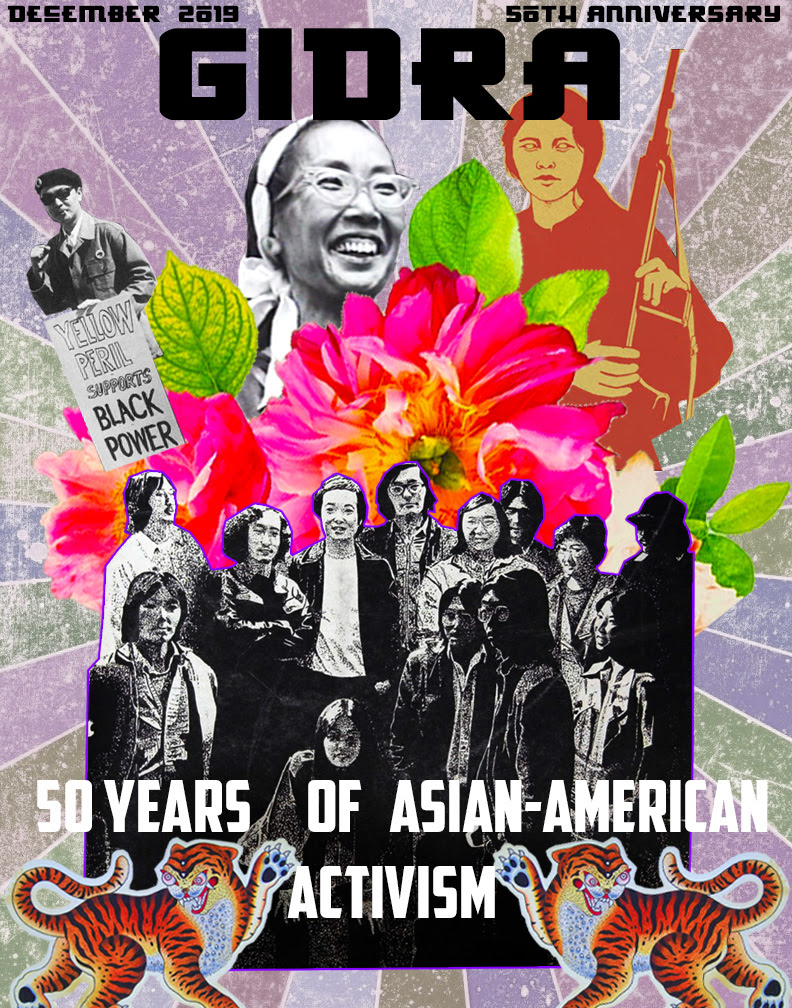
- “When a group of UCLA students met in 1969 with an idea to found a publication that would address issues facing the Asian American community, even the term ‘Asian American’ was considered revolutionary,” Brittany Martin reported Thursday for Los Angeles magazine. The publication — Gidra — lasted until 1975. “On the 45th anniversary of Gidra‘s last issue, a small group of Asian American activists of diverse ages and backgrounds -– from current college students to one of the early Gidra contributors — gathered at a restaurant in the same South L.A. neighborhood where the original publication had its offices, and hatched a plan to bring the publication back to life. This week, the first issue of the new Gidra makes its debut. . . .” Also: “How magazines made Asian America” (Columbia Journalism Review, July 9).
- “On July 13, Centro de Periodismo Investigativo (CPI), a nonprofit newsroom in Puerto Rico, published 889 pages of private messages sent between then-Governor Ricardo Rosselló and his top aides,“ Danny Jin reported Thursday for Columbia Journalism Review. Jin also wrote, “Much of the ensuing ‘RickyLeaks’ coverage overlooked a focal point for Rosselló and his aides: the news media.’ ‘What these chats showed is the extent to which the previous administration tried to game, push, pressure, and cajole the media to do certain things that maybe [they] otherwise wouldn’t do in terms of favoring that particular government,’ Federico Subervi, a media studies professor at the University of Leeds in Britain who studies Puerto Rican journalism, says. . . .”
- “Gov. Andrew Cuomo of New York recently vetoed a bill that would have required state agencies to collect demographic data for a wide number of Asian American ethnicities. Advocates criticized the move, saying the legislation would have helped reveal disparities among Asian American communities and address challenges faced by underserved groups,” Kimmy Yam reported Dec. 13 for NBC News. She also wrote, “In his rationale, Cuomo described the intent behind the bill as ‘laudable,’ however cited budgetary and implementation concerns. . . .”
 In St. Louis, Samantha Jones (pictured) has been named as the new co-anchor, alongside Steve Savard, on KMOV-TV’s main nightly newscasts, Joe Holleman reported Thursday for the St. Louis Post-Dispatch.
In St. Louis, Samantha Jones (pictured) has been named as the new co-anchor, alongside Steve Savard, on KMOV-TV’s main nightly newscasts, Joe Holleman reported Thursday for the St. Louis Post-Dispatch.
- “After working six days out of the week at Today, Sheinelle Jones is stepping back from co-hosting on the weekend,” Karen Mizoguchi reported Saturday for People. “On Saturday, the anchor, 41, announced she will no longer be appearing on the Saturday program of the morning franchise. . . .”
- Reporters Without Borders hailed “the exemplary sentences that a Philippine court passed today on those responsible for the murders of 58 people, including 32 journalists, ten years ago in the southern province of Maguindanao, but voices concern about the high number of acquittals and urges the judicial authorities to keep investigating,” the press freedom group said Thursday, updating Monday. “A total of 28 defendants were convicted of the November 2009 massacre in the town of Ampatuan, including eight members of the Ampatuan clan, a political dynasty that continues to exercise absolute control over the province. . . .”
 Reporters Without Borders called Dec. 17 “for the immediate release of Reda Elhadi Fheil el Boum (pictured), a well-known Libyan journalist and human rights defender, who has been missing ever since his arrest on arrival at Tripoli airport on a flight from Tunisia on the evening of 15 December. . . .El Boum has been the target of a major smear campaign on social networks for more than three years, ever since he published a report on the human rights situation in Libya for which he received the Media in Cooperation and Transition prize in 2017. . . .”
Reporters Without Borders called Dec. 17 “for the immediate release of Reda Elhadi Fheil el Boum (pictured), a well-known Libyan journalist and human rights defender, who has been missing ever since his arrest on arrival at Tripoli airport on a flight from Tunisia on the evening of 15 December. . . .El Boum has been the target of a major smear campaign on social networks for more than three years, ever since he published a report on the human rights situation in Libya for which he received the Media in Cooperation and Transition prize in 2017. . . .”
- “British Virgin Islands Governor Augustus Jaspert should reject cybercrime legislation recently approved by the territory’s legislature, or require revisions to the bill to protect press freedom,” the Committee to Protect Journalists said Monday. “Section 14B of the bill criminalizes ‘electronic defamation,’ defined as using a computer to defame someone, with penalties of up to three years in prison and fines up to $100,000. Section 14A criminalizes using a computer to send ‘grossly offensive’ or ‘menacing’ messages ‘for the purpose of causing annoyance or inconvenience,’ and imposes fines of up to $500,000 and jail terms of up to 14 years. . . .”
Facebook users: “Like” “Richard Prince’s Journal-isms” on Facebook.
Follow Richard Prince on Twitter @princeeditor
Richard Prince’s Journal-isms originates from Washington. It began in print before most of us knew what the internet was, and it would like to be referred to as a “column.” Any views expressed in the column are those of the person or organization quoted and not those of any other entity. Send tips, comments and concerns to Richard Prince at journal-isms-owner@yahoogroups.com
View previous columns (after Feb. 13, 2016).
- Diversity’s Greatest Hits, 2018 (Jan. 4, 2019)
- Book Notes: Is Taking a Knee Really All That? (Dec. 20, 2018)
- Book Notes: Challenging ’45’ and Proudly Telling the Story (Dec. 18, 2018)
- Book Notes: Get Down With the Legends! (Dec. 11, 2018)
- Journalist Richard Prince w/Joe Madison (Sirius XM, April 18, 2018) (podcast)
- Richard Prince (journalist) (Wikipedia entry)
- February 2018 Podcast: Richard “Dick” Prince on the need for newsroom diversity (Gabriel Greschler, Student Press Law Center, Feb. 26, 2018)
- Diversity’s Greatest Hits, 2017 — Where Will They Take Us in the Year Ahead?
- Book Notes: Best Sellers, Uncovered Treasures, Overlooked History (Dec. 19, 2017)
- An advocate for diversity in the media is still pressing for representation, (Courtland Milloy, Washington Post, Nov. 28, 2017)
- Morgan Global Journalism Review: Journal-isms Journeys On (Aug. 31, 2017)
- Diversity’s Greatest Hits, 2016
- Book Notes: 16 Writers Dish About ‘Chelle,’ the First Lady
- Book Notes: From Coretta to Barack, and in Search of the Godfather
- Journal-isms’ Richard Prince Wants Your Ideas (FishbowlDC, Feb. 26, 2016)
- “JOURNAL-ISMS” IS LATEST TO BEAR BRUNT OF INDUSTRY’S ECONOMIC WOES (Feb. 19, 2016)
- Richard Prince with Charlayne Hunter-Gault,“PBS NewsHour,” “What stagnant diversity means for America’s newsrooms” (Dec. 15, 2015)
- Book Notes: Journalists Follow Their Passions
- Book Notes: Journalists Who Rocked Their World
- Book Notes: Hands Up! Read This!
- Book Notes: New Cosby Bio Looks Like a Best-Seller
- Journo-diversity advocate turns attention to Ezra Klein project (Erik Wemple, Washington Post, March 5, 2014)
Columns below from the Maynard Institute are not currently available but are scheduled to be restored soon on journal-isms.com.
- Book Notes: “Love, Peace and Soul!” And More
- Book Notes: Book Notes: Soothing the Senses, Shocking the Conscience
- Diversity’s Greatest Hits, 2015
- Diversity’s Greatest Hits, 2014
- Diversity’s Greatest Hits, 2013
- Diversity’s Greatest Hits, 2012
- Diversity’s Greatest Hits, 2011
- Diversity’s Greatest Hits, 2010
- Diversity’s Greatest Hits, 2009
- Diversity’s Greatest Hits, 2008
- Book Notes: Books to Ring In the New Year
- Book Notes: In-Your-Face Holiday Reads
- Fishbowl Interview With the Fresh Prince of D.C. (Oct. 26, 2012)
- NABJ to Honor Columnist Richard Prince With Ida B. Wells Award (Oct. 11, 2012)
- So What Do You Do, Richard Prince, Columnist for the Maynard Institute? (Richard Horgan, FishbowlLA, Aug. 22, 2012)
- Book Notes: Who Am I? What’s Race Got to Do With It?: Journalists Explore Identity
- Book Notes: Catching Up With Books for the Fall
- Richard Prince Helps Journalists Set High Bar (Jackie Jones, BlackAmericaWeb.com, 2011)
- Book Notes: 10 Ways to Turn Pages This Summer
- Book Notes: 7 for Serious Spring Reading
- Book Notes: 7 Candidates for the Journalist’s Library
- Book Notes: 9 That Add Heft to the Bookshelf
- Five Minutes With Richard Prince (Newspaper Association of America, 2005)
- ‘Journal-isms’ That Engage and Inform Diverse Audiences (Q&A with Mallary Jean Tenore, Poynter Institute, 2008)

